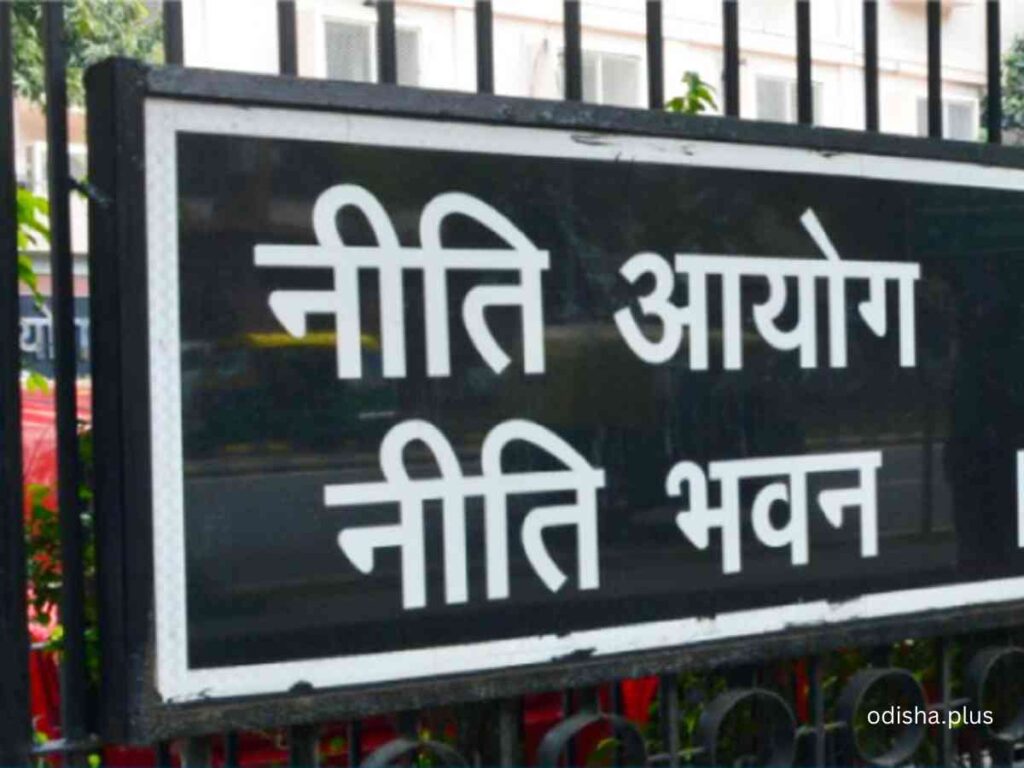NITI Aayog was established in 2015 to replace the Planning Commission, focusing on a ‘bottom-up‘ approach where states’ voices play a critical role
Pradeep Biswal

Decentralized Planning is a cornerstone of the planning process in India, and the 73rd and 74th constitutional amendments in 1993 provided constitutional status to the District Planning Committees (DPCs) at the district level to take it forward. In Odisha, the Chairpersons of the DPC are given the status of Minister of State, and certain funds have been placed at their disposal to address the local needs.
In 2015, the shift from the Planning Commission to NITI Aayog marked a significant paradigm shift in India’s approach to economic planning, moving from a centralized, top-down model to one that emphasizes cooperative federalism and decentralized planning. With this, the dichotomy between plan and non-plan in the budgetary process was removed, and the central transfer to the states on account of plan funds through the Planning Commission route was put to an end.
NITI Aayog was constituted as a “think tank” and advisory body that aims at fostering greater involvement of states and local bodies in the planning process. Its core objectives and functions supporting decentralized planning include s Cooperative Federalism. NITI Aayog actively involves states in policy-making and strategic planning, recognizing that strong states contribute to a strong nation. This is a crucial departure from the erstwhile Planning Commission’s centralized approach.
Under the bottom-up approach is another objective of the Aayog is to develop credible plans at the village level and progressively aggregate them at higher levels of government. This is a key aspect of decentralized planning, aiming to ensure that developmental policies reflect regional needs and priorities.
The Aspirational Districts Programme (ADP) comes third. This flagship program is a concrete example of NITI Aayog’s commitment to decentralized development. It focuses on rapidly transforming 112 underdeveloped districts by working closely with district administrations, state governments, and various development partners to improve key social indicators.
Monitoring and Evaluation are also important. NITI Aayog focuses on actively monitoring and evaluating the implementation of programs and initiatives, including identifying needed resources, to strengthen their success and delivery. This data-driven approach allows for a better assessment of decentralized initiatives.
The Policy and Programme Framework is yet another objective. While not allocating funds directly like the Planning Commission in the past, NITI Aayog designs strategic and long-term policy frameworks and initiatives, guiding states and local bodies in their planning.
Under the Knowledge and Innovation Hub, NITI Aayog serves as a platform for sharing best practices and promoting innovation, including in decentralized governance.
Despite NITI Aayog’s efforts, several challenges persist in fully realizing a decentralized planning process in India.
A significant hurdle remains the inadequate transfer of financial resources and autonomy to local self-governing bodies (Panchayati Raj Institutions and Urban Local Bodies). Often, these bodies act as mere agents for implementing central and state schemes, with limited flexibility in fund utilization.
Many local institutions lack the administrative structure, technical expertise, and human resources required to effectively formulate, implement, and monitor their own development plans.
While powers are often “devolved” on paper, the actual transfer of functions and decision-making authority to local bodies is often insufficient. State governments sometimes retain significant control, hindering true local autonomy.
The prevalence of CSS often dictates local priorities, leaving little room for local bodies to address their specific felt needs and priorities holistically.
Resistance from state-level bureaucracies and political interests hinders the effective decentralization of power and resources. There is a trust deficit between the state and the local bodies with respect to the devolution of power to the third tier of government.
While some states (like Kerala and Maharashtra) have made significant strides in decentralized planning, others lag due to varying levels of political commitment and institutional support.
The effective aggregation of village and district-level plans into state and national plans remains a challenge, ensuring consistency and avoiding duplication. There are State Planning Boards in fewer states, and even then, they don’t actively contribute to the state-level planning system.
While the spirit of democratic decentralization is to enhance people’s participation, low civic awareness and the dominance of local elites can sometimes dilute the true essence of participatory planning.
While these challenges exist, there have been notable successes in decentralized planning, particularly after the 73rd and 74th Constitutional
Amendments that mandated Panchayati Raj Institutions (PRIs) and Urban Local Bodies (ULBs) include increased participation. The amendments have opened avenues for greater participation, especially for marginalized sections and women, in local governance and planning processes. In areas where decentralization has been effectively implemented, it has led to better identification and addressing of local needs and priorities, improving service delivery in sectors like water supply, sanitation, and rural housing.
Bringing governance closer to the people can enhance the accountability of local functionaries to the community.
Decentralized planning can facilitate better mobilization and utilization of local resources, both financial and human. States like Kerala have been lauded for their successful implementation of decentralized planning, demonstrating how the devolution of powers, functions, and funds to local governments can lead to positive outcomes.
The future of decentralized planning in India, in the post-NITI Aayog era, hinges on several key aspects. Strengthening Local Bodies involves ensuring adequate financial devolution, enhancing the capacity of local institutions (technical and administrative), and clearly defining functional responsibilities.
Moving beyond being mere implementing agencies to truly empowering local governments to formulate and execute their plans, based on local needs and priorities.
Leveraging data analytics is also important, and real-time monitoring improves planning, implementation, and evaluation at the grassroots level. NITI Aayog’s emphasis on evidence-based policymaking aligns with this.
Inter-Agency Coordination is important. Improving coordination between different levels of government (center, state, and local) and various line departments to ensure seamless implementation of decentralized plans.
Promoting Competitive Federalism is also crucial. Encouraging healthy competition among states and districts (as seen in the Aspirational Districts Programme) to drive better outcomes in decentralized development.
Fostering genuine community participation through Gram Sabhas and other mechanisms to ensure that planning is truly people-centric is paramount. Continuous training and capacity-building programs for elected representatives and functionaries at the local level are crucial for effective planning and governance.
However, the true success of decentralized planning in the post-NITI Aayog era will depend on how effectively the persistent challenges of financial, functional, and institutional devolution are addressed, ensuring that local self-governance truly translates into responsive and inclusive development at the grassroots level.
(Pradeep Biswal, retired IAS Officer, is a bilingual poet writing both in Odia and English. His poems are widely anthologized. He is also an editor and translator of repute. Views are Personal)
























A nice article on top-down and bottom -up approaches in centralized and decentralised planning.
Factual presentation of current scenario concerning the vision and implementation of NITI AAYOG is forcefully and effectively carried out.